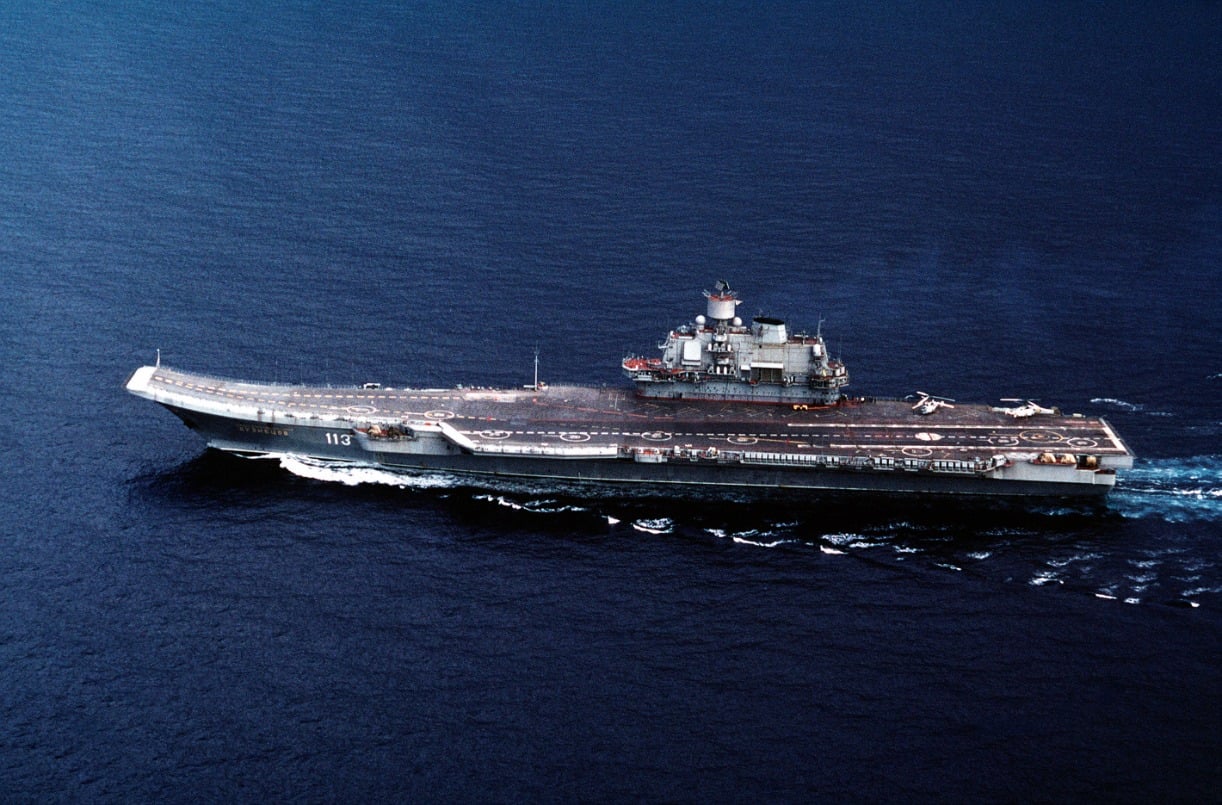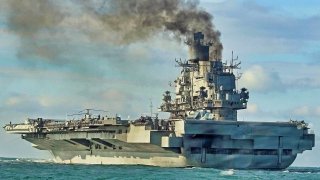Admiral Kuznetsov: Russia Won't Retire the Worst Aircraft Carrier Ever
Russia’s only aircraft carrier, Admiral Kuznetsov, has been plagued by years of mechanical issues, accidents, and poor performance. Initially designed to rival U.S. aircraft carriers during the Cold War, the Soviet-built ship was meant to project naval power and protect Soviet strategic assets.
Summary and Key Points You Need to Know: Russia’s only aircraft carrier, Admiral Kuznetsov, has been plagued by years of mechanical issues, accidents, and poor performance. Initially designed to rival U.S. aircraft carriers during the Cold War, the Soviet-built ship was meant to project naval power and protect Soviet strategic assets. Some experts consider this warship the worst aircraft carrier ever due to its horrible track record.
-However, it has become a symbol of Russia’s naval shortcomings. Despite frequent setbacks, Russia continues to keep the failing carrier in service rather than focusing on its more capable submarine force.
-Recent reports reveal the ship’s crew has been reassigned to combat in Ukraine, leaving behind a legacy of frustration and failure in port.
Russia’s Troubled Admiral Kuznetsov: Why It’s Time to Retire This Aircraft Carrier
The Admiral Kuznetsov is the Russian Aircraft Carrier Nightmare That Won’t End
With news that the crew of Russia’s shambolic aircraft carrier, Admiral Kuznetsov, has been reassigned to a “frigate brigade” and sent into the killing fields of Ukraine, it’s important to look at the warship they leave behind in port.
Admiral Kuznetsov once represented a fundamental change in the way the old Soviet Union conducted itself on the High Seas. The shift occurred in the late 1970s and early 1980s. The Soviet navy wanted to move beyond simply denying the U.S. Navy access to key waterways around Europe and Russia. It wanted to start challenging the Americans at sea.
Admiral Kuznetsov was the first real attempt by the Reds to build their own comparable force of carriers designed to counter the U.S. Navy’s aircraft carrier advantage.
As Admiral Kuznetsov’s performance bears out, the effort fell short.
There were many different reasons why the Soviets sought an aircraft carrier capability of its own. Beyond countering the perceived threat of America’s carriers on the high seas, the Soviets wanted to assert dominance in the maritime domain beyond their submarine-centric fleet.
Why Did Russia Want This Thing?
Admiral Kuznetsov was intended to extend Soviet naval power projection capabilities beyond the powerful Soviet submarine force. It was further believed that enhancing the Soviet surface warfare fleet would have the salutary effect of protecting strategic missile subs from NATO submarine hunters in the North Atlantic.
It's interesting to note that, despite what was a real desire to truly challenge the American Navy at sea, the old Soviet naval warfare doctrine was still buzzing about the minds of Soviet naval planners. Admiral Kuznetsov is, by all counts, an aircraft carrier. Yet the Soviets did not classify it as an aircraft carrier. Instead, they referred to it as a “heavy aircraft-carrying cruiser.”
This was done to confuse rival intelligence services and to skirt around certain treaty requirements. More importantly, whereas U.S. carriers are explicitly designed to project U.S. naval power, Admiral Kuznetsov was viewed as a platform for covering for the larger Soviet submarine force.

Over time, though, had the Soviet Union survived and had Admiral Kuznetsov proven itself to be a success, the Soviets would have expanded their carrier force and likely would have viewed their carrier fleet as a power projection tool.
Like The Sopranos, It’s Over
Admiral Kuznetsov was meant to serve as a symbol of the Soviet Union’s growing technological and military might. How fitting that, even at the outset of its existence, it was a nightmare vessel.
To this very day, Admiral K is a perennial humiliation for the Russians. Why they insist on trying to keep this failure factory going is beyond me. One can only assume it’s to meet some vestigial urge to exhibit the same capabilities as their American rivals.
If Moscow were smart, they’d retire this ship and instead focus on enhancing Russia’s impressive submarine force.
Author Experience and Expertise: Brandon J. Weichert
Brandon J. Weichert, a National Interest national security analyst, is a former Congressional staffer and geopolitical analyst who is a contributor at The Washington Times, the Asia Times, and The-Pipeline. He is the author of Winning Space: How America Remains a Superpower, Biohacked: China’s Race to Control Life, and The Shadow War: Iran’s Quest for Supremacy. His next book, A Disaster of Our Own Making: How the West Lost Ukraine, is due October 22 from Encounter Books. Weichert can be followed via Twitter @WeTheBrandon.
All images are Creative Commons or Shutterstock.
From the Vault
Russia Freaked Out: Why the U.S. Navy 'Unretired' the Iowa-Class Battleships
Battleship vs. Battlecruiser: Iowa-Class vs. Russia's Kirov-Class (Who Wins?)


